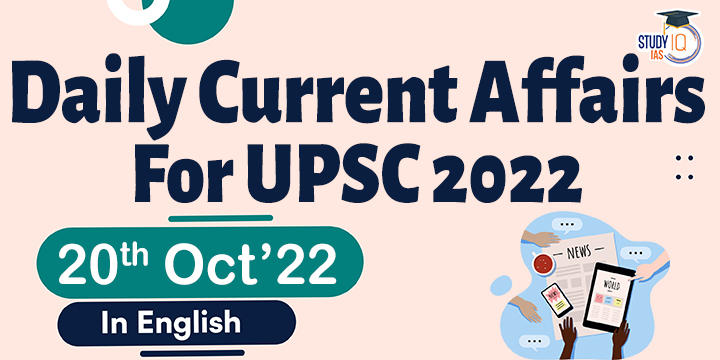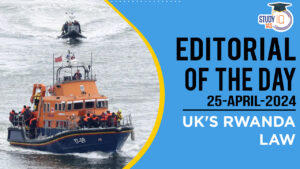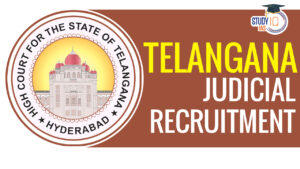Daily Current Affairs for UPSC 2022
Q) With regard to the “Swadesh Darshan 2” Scheme, consider the following statements:
- The Swadesh Darshan Scheme is a central sector scheme for the integrated development of theme-based tourist circuits.
- Prominent destinations: Jhansi and Prayagraj (Uttar Pradesh) Gwalior, Chitrakoot and Khajuraho (Madhya Pradesh) and Ajanta and Ellora (Maharashtra).
- The scheme has been developed on the ‘vocal for local’ theme. It is essentially aimed at targeting foreign tourists.
Which of these statements are correct?
- 1 and 3 only
- 2 and 3 only
- All of the above
- 1 and 2 only
Daily Current Affairs for UPSC – 19 October 2022
Explanation:
More on the Policy:
- The government has identified locations in 15 States across India to be promoted under this new tourism policy. The policy will focus on destination tourism. (Statement 1 is correct)
- Prominent destinations: Jhansi and Prayagraj (Uttar Pradesh) Gwalior, Chitrakoot and Khajuraho (Madhya Pradesh) and Ajanta and Ellora (Maharashtra). (Statement 2 is correct)
- Target: The scheme has been developed on the theme of ‘vocal for local’. It is essentially aimed at targeting domestic tourists. (Statement 3 is not correct)
- Objectives: Create jobs including self-employment for local communities, improve skills of local youth in tourism and hospitality, increase private sector investment in tourism and hospitality and preserve local cultural and natural resources.
- Major themes: (i) Culture and Heritage (ii) Adventure Tourism (iii) Eco-Tourism (iv) Wellness Tourism (v) MICE (Meetings, Incentives, Conferences and Exhibitions) Tourism (vi) Rural Tourism (vii) Beach Tourism (viii) Cruises – Ocean & Inland.
Q) Consider the following statements regarding National Credit Framework (NCrF)
- The NCrF aims to bring the entire education system, from school to university, into the academic ‘credit’ regime.
- The NCrF will be operationalized through the NITI Aayog in collaboration with University Grants Commission for higher education.
Which of these statements are correct?
- 1 only
- Both 1 and 2
- 2 only
- Neither 1 nor 2
Explanation:
What is the draft National Credit Framework (NCrF)?
- About: NCrF is an inclusive umbrella framework to integrate the credits earned through school education, higher education and vocational & skill education.
- The NCrF has been proposed as part of the National Education Policy (NEP) 2020.
- Aim: The NCrF aims to bring the entire education system, from school to university, into the academic ‘credit’ regime. (Statement 1 is correct)
- The NCrF will be operationalized through the Academic Bank of Credits (ABC) which was launched in 2021 by the University Grants Commission for higher education. (Statement 2 is not correct)
- The ABC works as a digital repository of credits earned by students. So far, it is limited to higher education.
Q) Consider the following statements regarding PRASAD Scheme
- It was launched with the objective of holistic development of identified pilgrimage destinations.
- It is a central sector scheme by Ministry of Culture.
- State/Union Territory Government has to designate agencies to carry out the projects outlined under this scheme.
Which of these statements are correct?
- 1 only
- 1 and 3 only
- 1 and 2 only
- 2 and 3 only
Explanation:
- The Pilgrimage Rejuvenation and Spiritual Augmentation Drive (PRASAD) is a central sector scheme by Ministry of Tourism, (Statement 2 is not correct) launched with the objective of holistic development of identified pilgrimage destinations. (Statement 1 is correct)
- The scheme aims to integrate pilgrimage destinations in a prioritized, planned and sustainable manner to provide a complete religious tourism experience.
- Implementation: State/Union Territory Government has to designate agencies to carry out the projects outlined under this scheme. (Statement 3 is correct)
Q) Which of the following is not a reason for pollution in Delhi during winters?
- Localised emissions
- Inland winds
- Low humidity
- Flowing of cold winds
Explanation:
Pollution in Delhi:
Reasons for pollution during winters:
- Localized emissions: Majority of pollution in Delhi is caused due to industrial exhaust, burning of municipal waste, vehicular emission and construction waste. These add upto 80% of pollution source in the city and neighbouring areas.
- Inland winds: Winds flowing from coasts to the inland bring dust particles that hit the Himalayas and get trapped. This accumulates over northern plains, including Delhi.
- Low humidity: During winter, the region witnesses low levels of humidity. In absence of humidity, particulate matter keeps floating in the atmosphere without settling down.
- Trapping of cold air: Cooler air descends towards the ground during winter and warm air rises above it, acting as a lid. The cold air traps dust and associated particles to form smog.

Q) Consider the following statements regarding the Kishanganga Hydroelectric Power Project
- It is a run-of-the-river hydroelectric power project by the Government of India on the Neelum River.
- It is located near Dharmahama Village, 5 km north of Bilaspur, Himachal Pradesh.
Which of these statements are correct?
- 2 only
- Both 1 and 2
- Neither 1 nor 2
- 1 only
Explanation:
The Kishanganga Hydroelectric Power Project
- About: It is a run-of-the-river hydroelectric power project by the Government of India on the Neelum River (or Kishanganga), a tributary of the Jhelum River. (Statement 1 is correct)
- Location: It is located near Dharmahama Village, 5 km north of Bandipore in the Kashmir valley. (Statement 2 is not correct)
- Project details:
- The project includes a concrete-face rock-fill dam designed to divert water from the Kishanganga River through a tunnel to a power plant in the Jhelum River basin.

Q) Which of these statements about Compressed Biogas is not correct?
- Compressed Biogas (CBG) is formed by removing Water (H2O), carbon dioxide (CO2), water vapour from biogas.
- Biogas is a biomethane produced by anaerobic digestion of Agri-residues/organic wastes.
- CBG ‘s calorific value and other properties are similar to CNG.
- Sources of CBG can be agricultural residue, cattle dung, sugarcane press mud, municipal solid waste, sewage treatment plant waste, etc.
Explanation:
Compressed Biogas (CBG):
- Compressed Biogas (CBG) is formed by removing hydrogen sulphide (H2S), carbon dioxide (CO2), water vapour from biogas and compressing it. (Statement a is not correct)
- Biogas is a biomethane produced by anaerobic digestion of Agri-residues/organic wastes.
- CBG ‘s calorific value and other properties are similar to CNG and hence can be utilized as green renewable automotive fuel.
- Sources of CBG can be agricultural residue, cattle dung, sugarcane press mud, municipal solid waste, sewage treatment plant waste, etc.
Q) Recently in news, ‘Bhavishya’ and ‘Anubhav’ portal are related to which of the following?
- Educational Outreach
- Personnel Management
- Skill Development
- Banking Operations
Explanation:
More on the News
- The portal will act as a one-stop solution for all the pensioners’ needs and has been developed in collaboration with State Bank of India (SBI).
- The portal will be linked to ‘Bhavishya’, CPENGRAMS (Centralised Pension Grievances Redress and Monitoring System) and Anubhav (a platform for retiring government officials to leave a record of their experiences while in government service and suggest improvement).
- After the complete integration, the retirees can choose a bank and branch for opening an online pension account, monitor their monthly pension slips, Form 16, status of life certificate as well as change the bank disbursing pension through Bhavishya.
Q) Recently in news, the National Maritime Heritage Complex is coming up at which of the following locations?
- Cochin
- Dholavira
- Lothal
- Andaman
Explanation:
Context: The Prime Minister asserted that the upcoming National Maritime Heritage Complex at Lothal will act as a centre for learning India’s diverse maritime history.
About the National Maritime Heritage Complex (NMHC)
- NMHC is being developed in Lothal region of Gujarat.
- It would be developed as an international tourist destination, where the maritime heritage of India from ancient to modern times would be showcased.
- The purpose of the museum complex is edutainment (education + entertainment).
- It is going to cover an area of 400 acres, with structures such as Heritage Theme Park, National Maritime Heritage Museum, Lighthouse Museum, Maritime Institute, eco-resorts, and more.
- The unique feature of NMHC is the recreation of ancient Lothal city, which is one of the prominent cities of the ancient Indus valley civilization.
Q) Arrange the following rivers from South to North
- Chenab
- Jhelum
- Ravi
- Beas
Select the correct answer from the code below
- 1, 3, 2, 4
- 4, 2, 3, 1
- 4, 3, 2 ,1
- 4, 3, 1, 2
Explanation:
Beas – Ravi – Chenab – Jhelum

Q) Recently in news, the term ‘HTT-40’ relates to which of the following?
- Internet Service Protocol
- Malware
- Aircraft
- Missile Defence System
Explanation:
About the Mission DefSpace
- It is an initiative of the Government of India to enable the development of innovative solutions for the defence forces in the space domain through industry and startups.
- Under this Mission, 75 challenges are being opened to get innovative solutions, based on the defence requirements in the space domain.
- He also unveiled the HAL HTT-40 (Hindustan Turbo Trainer-40) is an Indian training aircraft designed and built by Hindustan Aeronautics Limited (HAL).
Daily Current Affairs for UPSC – 21 October 2022


 Current Affairs 25th April 2024 for UPSC...
Current Affairs 25th April 2024 for UPSC...
 Editorial of the day (25th Apr): UK's Rw...
Editorial of the day (25th Apr): UK's Rw...
 Telangana Judicial Recruitment Notificat...
Telangana Judicial Recruitment Notificat...

















